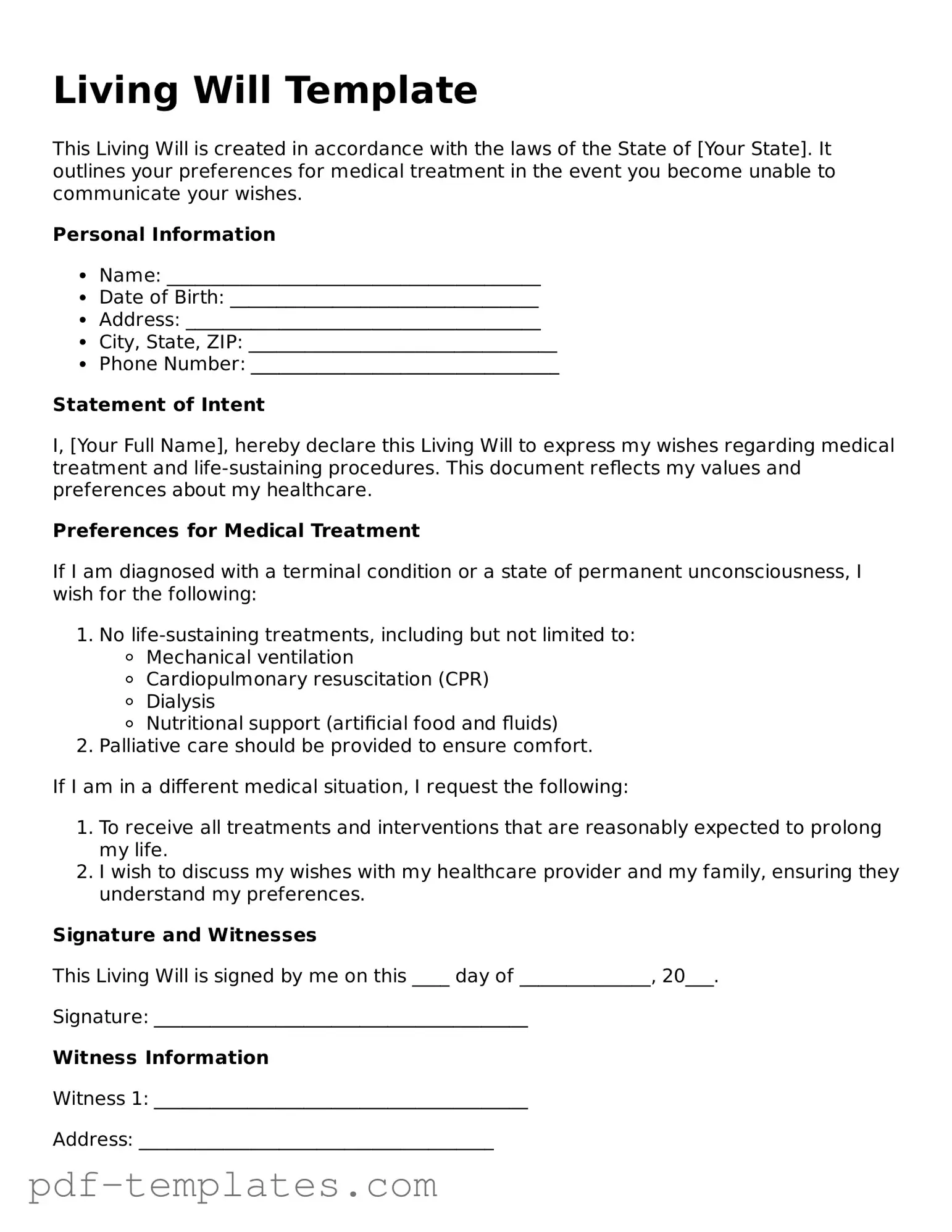Living Will Document
A Living Will is a legal document that outlines your preferences for medical treatment in case you become unable to communicate your wishes. This form plays a crucial role in ensuring that your healthcare decisions align with your values and desires, even when you cannot express them. If you want to take control of your future healthcare decisions, consider filling out the Living Will form by clicking the button below.
Customize Form Now
